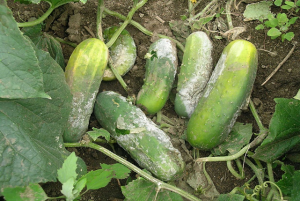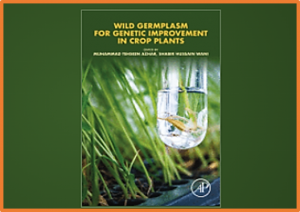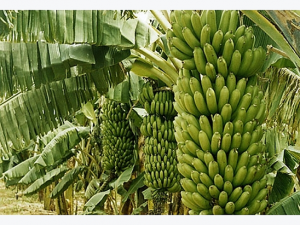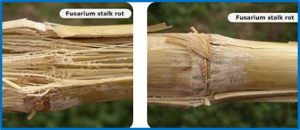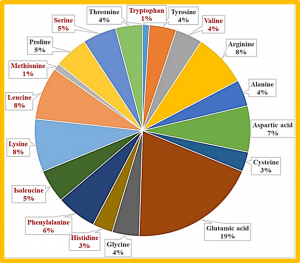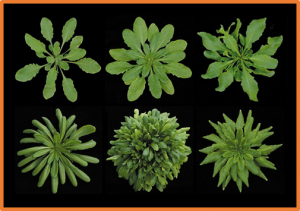Cucumber (Cucumis sativus L.) is an important economic vegetable crop worldwide that is susceptible to various common pathogens, including powdery mildew (PM), downy mildew (DM), and Fusarium wilt (FM). In cucumber breeding programs, identifying disease resistance and related molecular markers is generally a top priority. PM, DM, and FW are the major diseases of cucumber in China that cause severe yield losses and the genetic-based cucumber resistance against these diseases has been developed over the last decade.
Crop wild relatives (CWRs) are weedy and wild relatives of the domesticated and cultivated crops, which usually occur and are maintained in natural forms in their centres of origin. These include the ancestors or progenitors of all cultivated species and comprise rich sources of diversity for many important traits useful in plant breeding. CWRs can play an important role in broadening genetic bases and introgression of economical traits into crops
Adverse environmental factors severely affect crop productivity. Improving crop resistance to multiple stressors is an important breeding goal. Although CBFs/DREB1s extensively participate in plant resistance to abiotic stress, the common mechanism underlying CBFs/DREB1s that mediate resistance to multiple stressors remains unclear. Here, we show the common mechanism for MaDREB1F conferring cold and drought stress resistance in banana
Soils in sub-Saharan Africa are nitrogen deficient due to low fertilizer use and inadequate soil fertility management practices. This has resulted in a significant yield gap for the major staple crop maize, which is undermining nutritional security and livelihood sustainability across the region. Dissecting the genetic basis of grain protein, starch and oil content under nitrogen-starved soils can increase our understanding of the governing genetic systems and improve the efficacy of future breeding schemes.
Fusarium stalk rot (FSR) of maize is an economically important post-flowering stalk rot (PFSR) disease caused by Fusarium verticillioides. The pathogen invades the plant individually, or in combination with other stalk rot pathogens or secondary colonizers, thereby making it difficult to make accurate selection for resistance. For identification and validation of genomic regions associated with FSR resistance, a genome-wide association study (GWAS) was conducted with 342 maize lines.
Globally, sorghum is the fifth most important crop, which is used for food, feed and fuel. However, its production and productivity are severely limited by various stresses, including drought. Hence, this study aimed to determine the responses of different drought-tolerance related traits in the Ethiopian sorghum germplasm through multi-environment field trials, thereby identifying novel sources of germplasm that can be used for breeding the crop for drought-tolerance.
Soybean is an important crop for food, oil, and forage and is the main source of edible vegetable oil and vegetable protein. It plays an important role in maintaining balanced dietary nutrients for human health. The soybean protein content is a quantitative trait mainly controlled by gene additive effects and is usually negatively correlated with agronomic traits such as the oil content and yield.
Crop wild relatives (CWRs) are recognized as the best potential source of traits for crop improvement. However, successful crop improvement using CWR relies on identifying variation in genes controlling desired traits in plant germplasms and subsequently incorporating them into cultivars. Epigenetic diversity may provide an additional layer of variation within CWR and can contribute novel epialleles for key traits for crop improvement. There is emerging evidence that epigenetic variants of functional and/or agronomic importance exist in CWR gene pools.
Insect resistance in crops has been a major research objective in several crop improvement programs. However, the use of conventional breeding methods to develop high-yielding cultivars with sustainable and durable insect pest resistance has been largely unsuccessful. The use of molecular markers for identification and deployment of insect resistance quantitative trait loci (QTLs) can fastrack traditional breeding methods. Till date, several QTLs for insect pest resistance have been identified in field-grown crops, and a few of them have been cloned by positional cloning approaches.
Vascular plants reinforce the cell walls of the different xylem cell types with lignin phenolic polymers. Distinct lignin chemistries differ between each cell wall layer and each cell type to support their specific functions. Yet the mechanisms controlling the tight spatial localization of specific lignin chemistries remain unclear. Current hypotheses focus on control by monomer biosynthesis and/or export, while cell wall polymerization is viewed as random and non-limiting


 Curently online :
Curently online :
 Total visitors :
Total visitors :
